Here’s How To Grow Pothos (AKA ‘Devils Ivy’) – A Lush And Evergreen Houseplant


Ed is a horticultural therapist, professional gardener and writer. Ed has a BSc in Occupational Therapy from Coventry University and a Diploma in Social and Therapeutic Horticulture (DipSTH) via Thive, the RHS and Pershore College. Ed runs a community kitchen garden in West Sussex, where he leads horticultural therapy sessions.
Reviewed By COLIN SKELLY

Colin is a Horticulturist and Horticultural Consultant with experience in a range of practical and managerial roles across heritage, commercial and public horticulture. He holds the Royal Horticultural Society’s Master of Horticulture award and has a particular interest in horticultural ecology and naturalistic planting for habitat and climate resilience.
Epipremnum aureum is far better known here in the UK as ‘Pothos’ or ‘Devil’s Ivy’.
A lush and evergreen houseplant, that is incredibly easy to grow, it’s perfect as a first house plant or to add to a collection.
Overview
| Botanical Name | Epipremnum aureum |
| Common Name(s) | Pothos, Devil’s Ivy |
| Plant Type | Houseplant / Climber |
| Native Area | Society Islands |
| Hardiness Rating | H1B |
| Foliage | Evergreen |
| Flowers | None (cream flowers when grown in the wild) |
| When To Grow | Year-round |
Sunlight
Preferred
Full Sun or Partial Shade
Exposure
Indoors
Size
Height
4 – 8M
Spread
1 – 1.5M
Soil
Preferred
Most soil types
Moisture
Moist but well-drained
pH
Any
With more of us looking to bring nature indoors, whether in our homes or offices, plants such as Pothos have been proven as a consistently good choice.
Some houseplants can be more tricky than others to look after and keep alive and growers can easily be put off by previous failures.

However, pothos is one of the easiest to care for and will grow well even if neglected a tad.
What Are Pothos?

Pothos are tropical vines and part of the Araceae family, which originate from Asia.1Epipremnum aureum. (n.d.). North Carolina Extension Gardener. Retrieved May 22, 2023, from https://plants.ces.ncsu.edu/plants/epipremnum-aureum/
With their large evergreen heart-shaped leaves, they are a great feature plant for indoors.
As a robust plant that can survive a fair amount of neglect, pothos are a great first houseplant to try and come in many different varieties.
As a vine, it looks equally good when allowed to trail down from high up on a mantlepiece or table, or grown vertically with supports.
Common Varieties
The most commonly grown and widely available variety here in the UK is Golden Pothos, which is obtainable from most garden centres.
However, some of these other varieties might need to be purchased from a house plant online retailer.
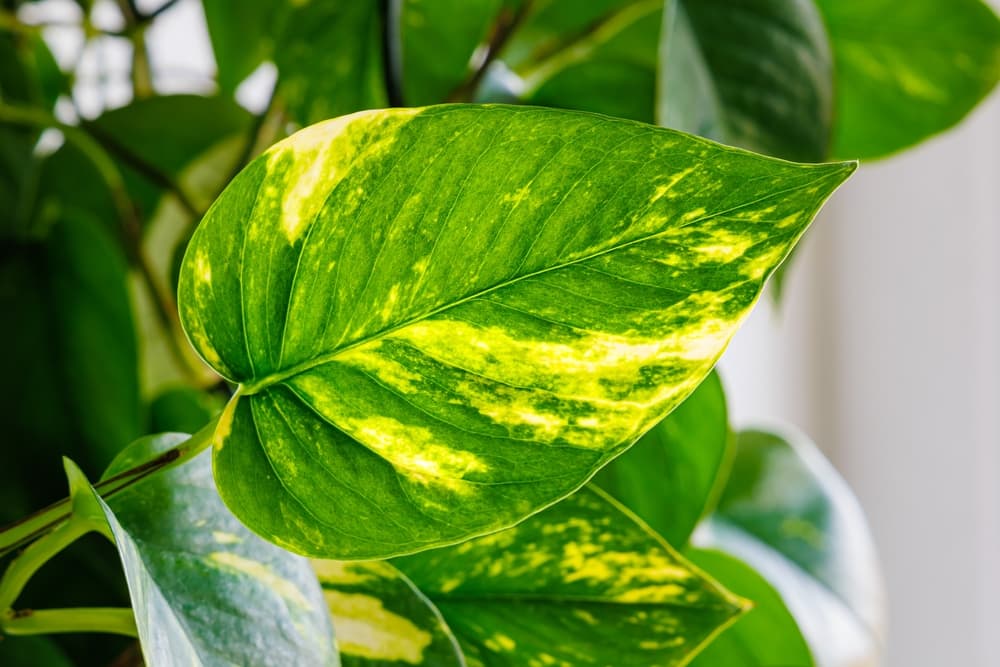
E. aureum AGM or ‘Golden Pothos’ with its glossy green leaves tinged with random yellow streaks is a great trailing plant and is best shown off from a height. Having been awarded the Award of Garden Merit (AGM) by the RHS, it has shown to grow reliably well.

E. aureum ‘Neon’ or ‘Golden Neon Pothos’ is a vibrant variety with its solid bright yellow foliage. Happily trailing down from a container or pot, it looks great if hung in the air or from a shelf.

E. ‘Trebie’ or ‘Satin Pothos Trebie’ is a stunning variegated option that produces large green leaves tinged with silver streaks. It grows well up moss support providing vertical impact to any room.
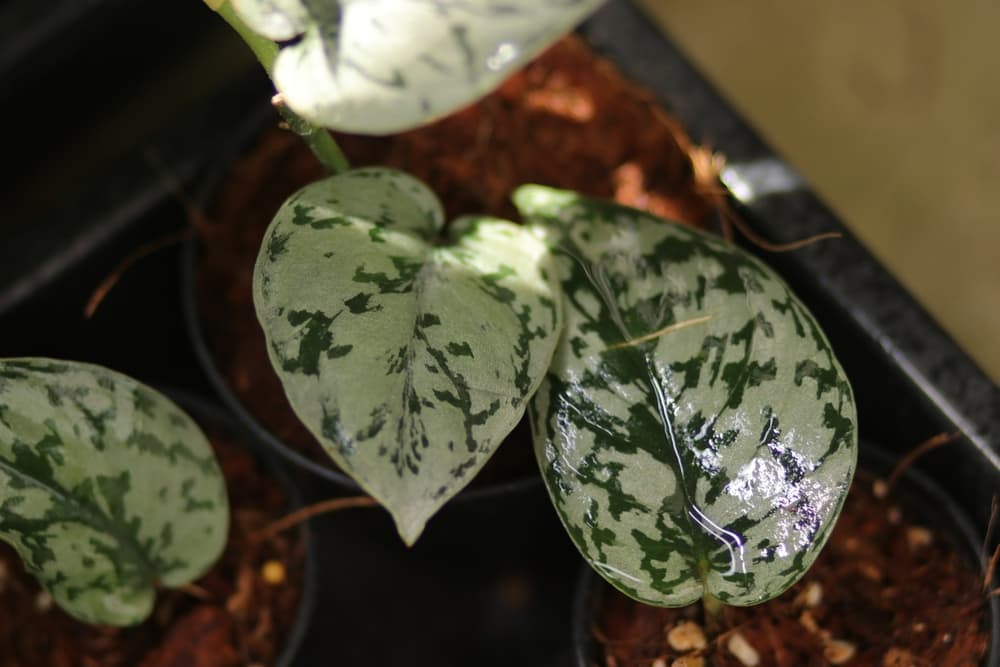
E. pictum ‘Silvery Ann’ is a variegated variety, similar to pothos trebie, but with more silver foliage. As with the other varieties, it looks good whether allowed to trail or trained up a moss pole.
How To Grow Pothos
Pothos originate from warmer and more humid climates than here in the UK, which is why they are grown exclusively here as indoor plants.
Sunlight & Temperature
When grown as houseplants, pothos prefer a light spot, but not in direct sunlight which can burn the leaves and will also cope with a fair amount of shade.
Pothos generally grow well indoors in the UK where there is a temperature of 12–24°C.
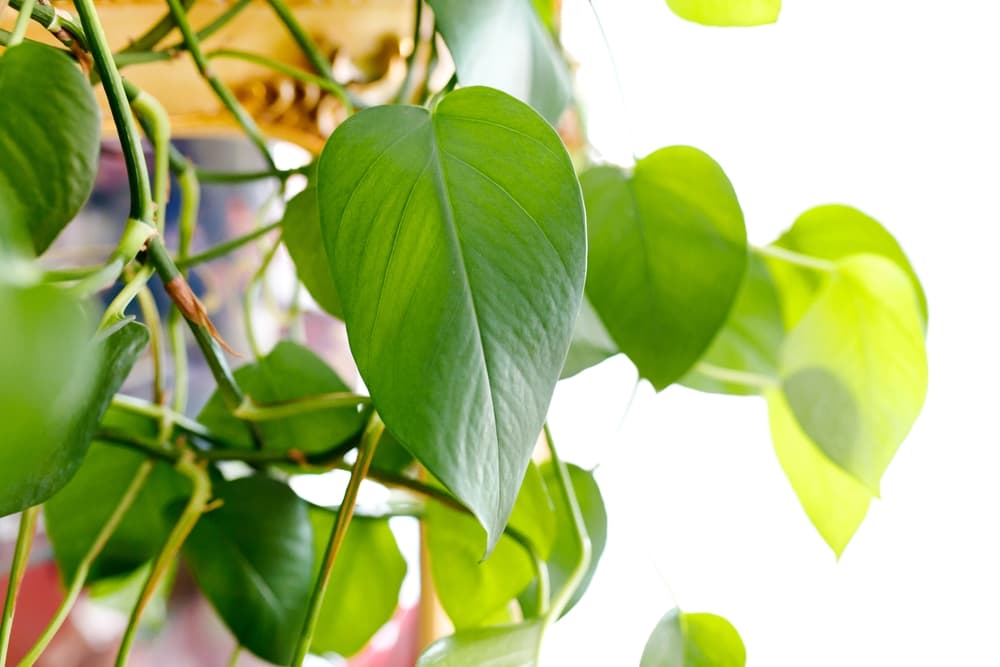
They prefer humid conditions so a bathroom or kitchen can be ideal, but can also be grown in a normal household environment with misting on occasion.
Watering
Pothos are actually drought tolerant and prefer to be allowed to dry out slightly before being watered again.
If worried about how much to water, it is best to err on the drier side, as too much water can kill them.
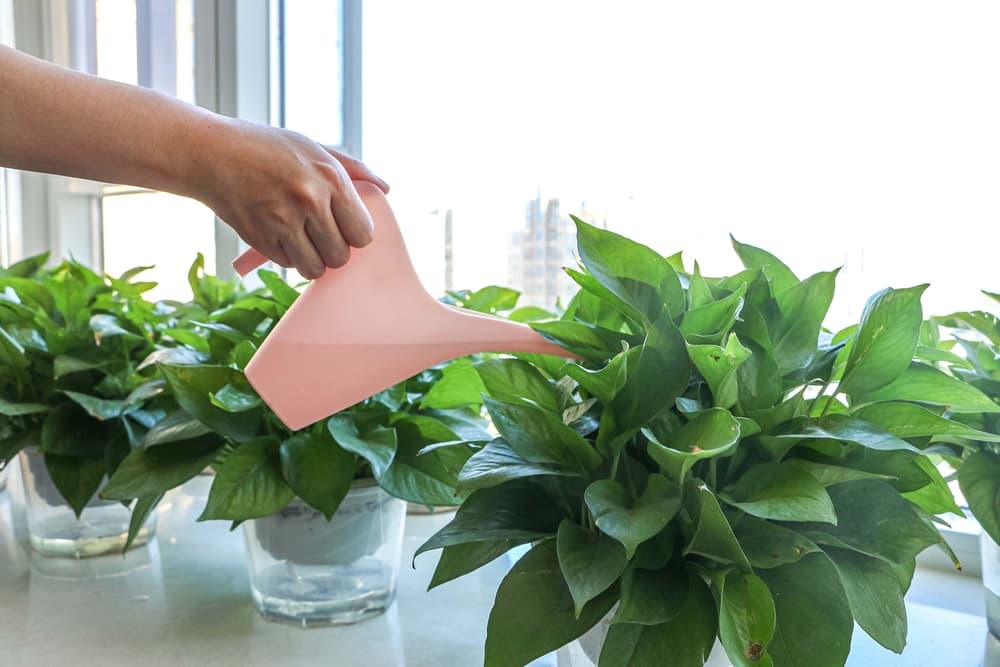
Grown in a free-draining potting mix is ideal as it will allow any excess water to drain away and avoid the plant’s roots becoming waterlogged.
It is advised that when watering, use room temperature water, rather than very cold water.
Feeding
Pothos are not particularly hungry plants and thus do not need a huge amount of food and nutrition, feeding can be left to a 4–6 week schedule and plants fed with a balanced indoor plant fertiliser.
Repotting
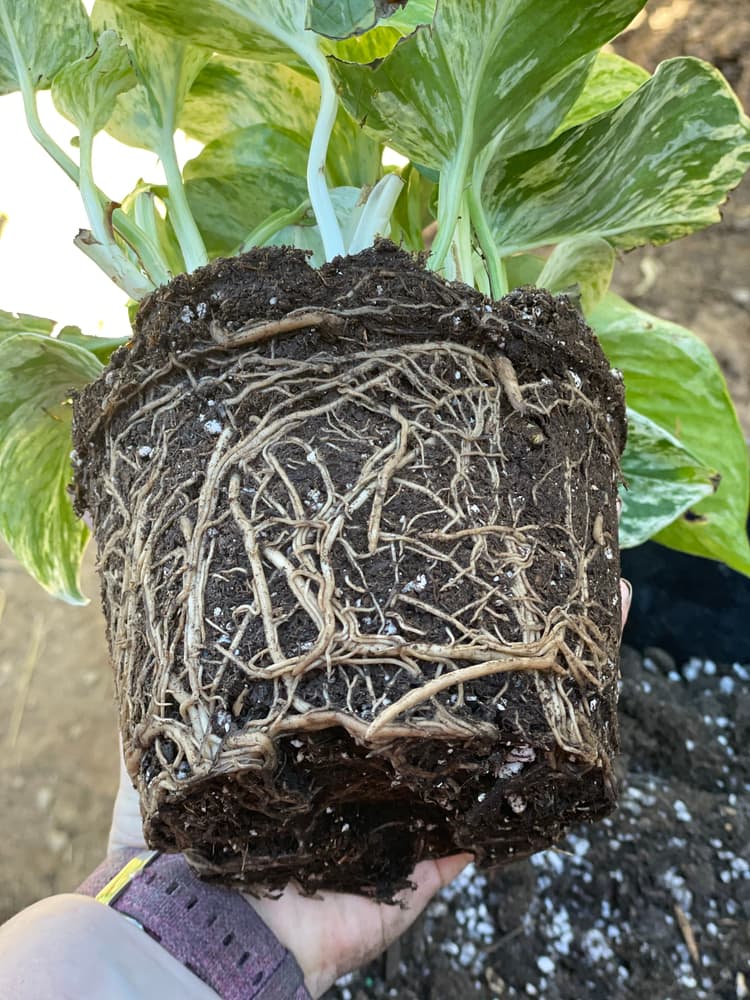
Pothos can grow quite quickly in the right conditions and will eventually need repotting.
When the plant’s roots become root-bound or when the roots protrude out of the bottom of the pot, it is time to pot them on – using a slightly wider and deeper pot with new potting compost.
Pruning
Pruning pothos plants simply depends on how much space you have and how large you would like them to grow.
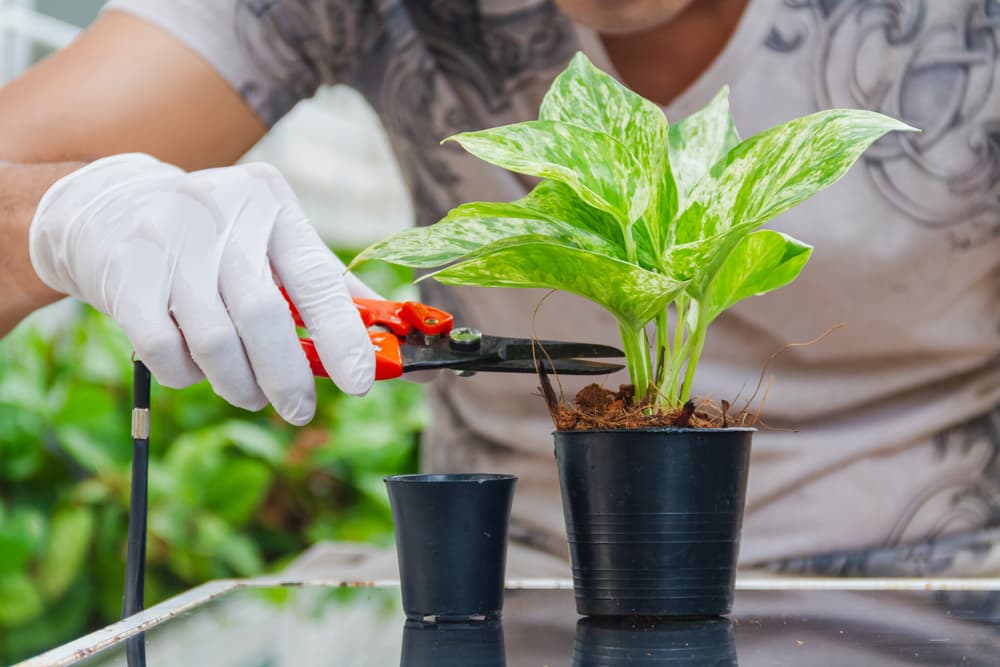
They can be cut back hard to 5-10cm in order to rejuvenate or just the vine ends lightly trimmed to limit growth.
Either way, it is recommended to use a clean and sharp pair of secateurs and to cut just above a leaf join.
When grown in the wild, pothos can be known to produce cream flowers.
However, when grown as houseplants they are unlikely to do so.
Propagating Pothos
Pothos are easy to grow and simple to propagate from cuttings, meaning you can increase your own collection or give away any spare plants to friends and family.
To create new plants, a cutting needs to be taken, either for this specific purpose or from a pruning.
Pothos plants have little bumps along the stems called root nodes and any cuttings ideally need to have 2–3 root nodes in order to have the best chance of developing a good root system.
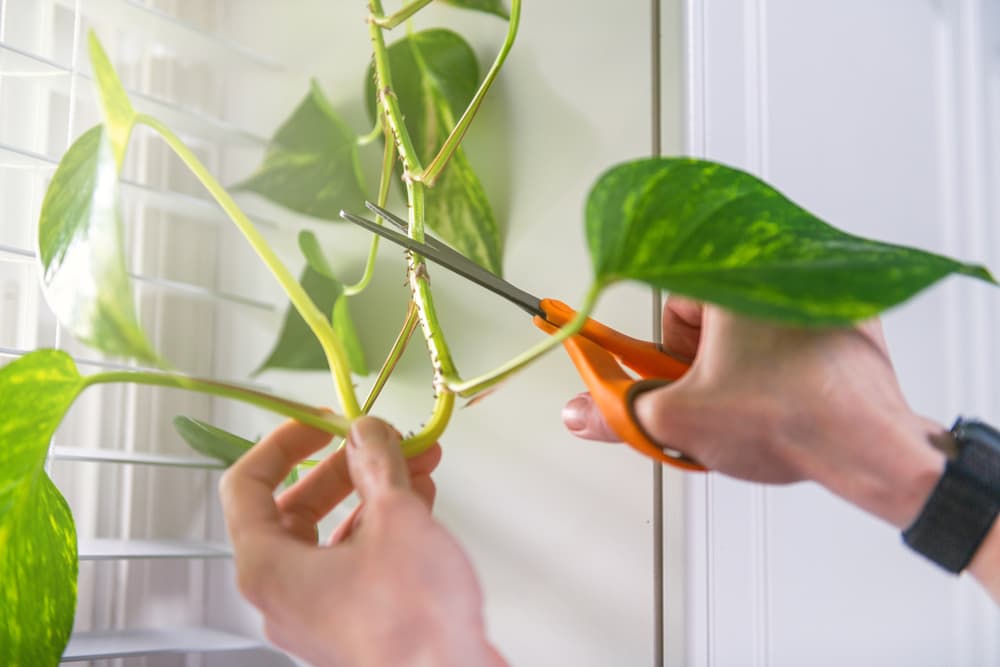
The cuttings simply need to be placed in a glass of water, deep enough to cover the stem and nodes, but not so deep as for the leaves to get wet.
Place the glass on an indoor window sill and wait to see the roots develop from the nodes.
Once the roots have grown to 3–5cm, which usually takes 6–8 weeks, the cutting can then be removed from the water and planted into a small pot full of free-draining potting soil.

Common Problems
Pothos plants are usually relatively pest and disease-free, however being indoor plants, they can be susceptible to mealy bugs and spider mites.
Mealy Bugs
Mealy bugs are white sap-sucking insects that leave a telltale white and fluffy residue on the foliage behind them.
If allowed to develop into a severe infestation, mealybug damage can lead to leaf drop and eventual demise of the plant.
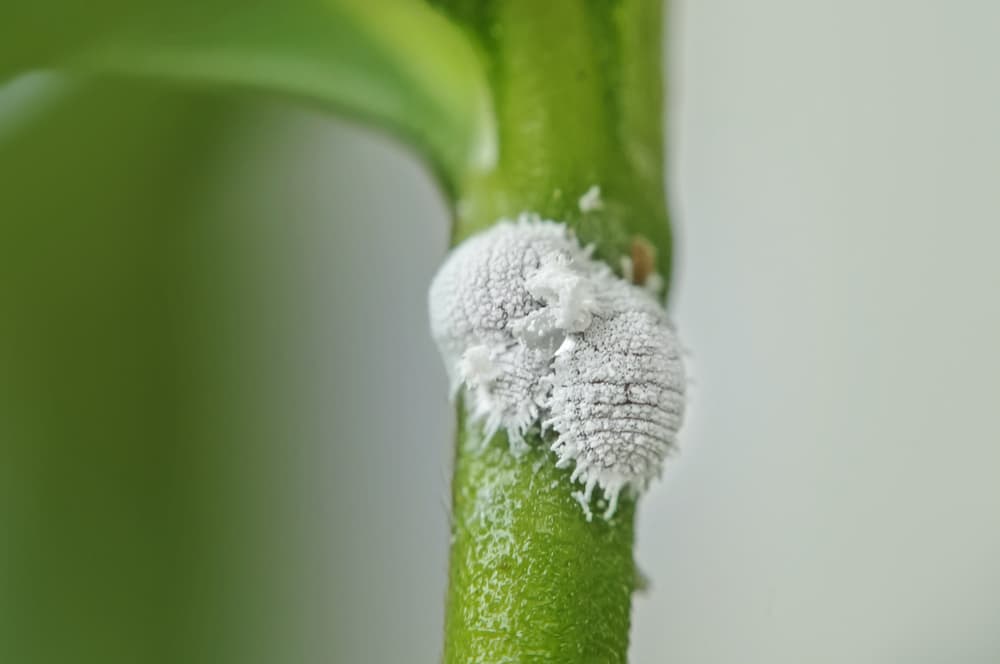
The first line of control is squishing any visible bugs by hand and hosing off all foliage and stems outside with a hose spray adapter.
If the infestation is more severe, plant oil and fatty acid sprays can be used or contact insecticides as a last resort.
Spider Mites
Spider mites can be one of the most problematic pests to houseplants.
A sap-sucking mite, they leave behind a mottled appearance on the foliage and can cause leaf loss and even death of the plant.
Controls can include increasing humidity either by moving the plant or by increased misting, however this is more of a prevention than control.
As with mealy bugs, fatty acid and plant oil spray can be used or an insecticide for severe cases.
Variegation Loss
Pothos plant foliage may begin to lose its decorative variegation over time with the leaves reverting back to a single colour.
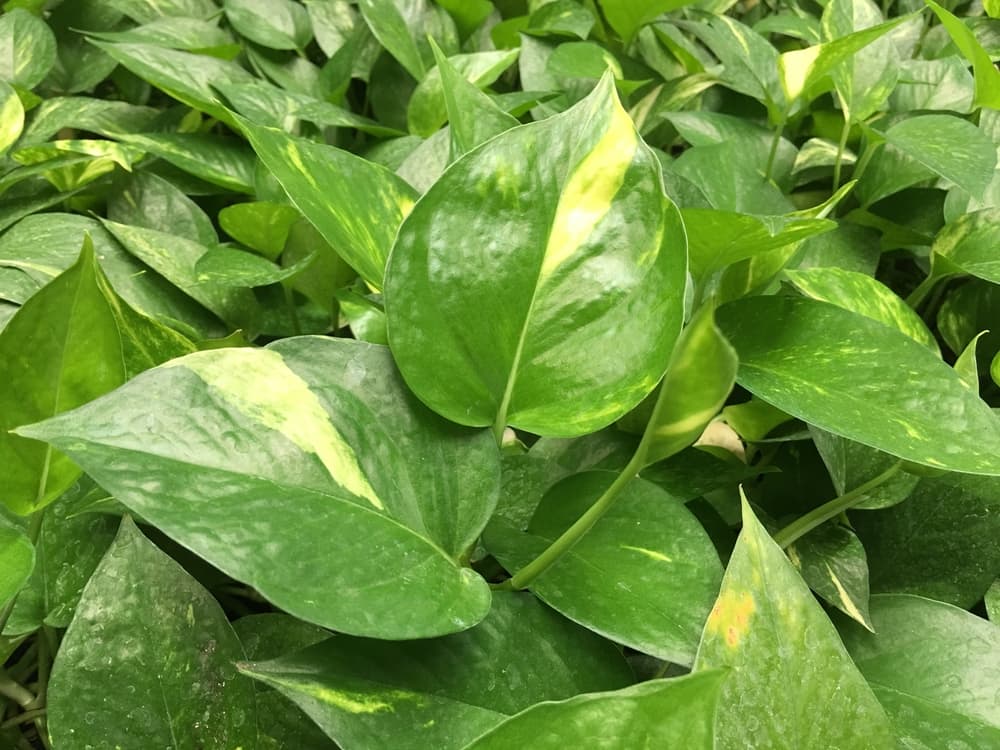
This can sometimes be caused by the plant receiving too little light and is of no consequence other than cosmetic.
However, by moving the plant to a brighter spot the variegation should return to the leaves with time.
“If only one section of the plant has lost variegation, this is most likely due to reversion rather than a lack of light,” shares Master Horticulturist Colin Skelly.
“This is where new growth loses variegation, often growing faster than the variegated leaves and taking over in time due to having more green chlorophyll in the leaf.
“Look carefully and locate where the reverted growth originates and cut it back to the stem leaving only variegated growth.”
Root Rot
Overwatering is often a problem when caring for houseplants, especially pothos.
Overwatering or wet and soggy roots can lead to sudden yellowing leaves, severe wilting and the roots rotting and turning brown.
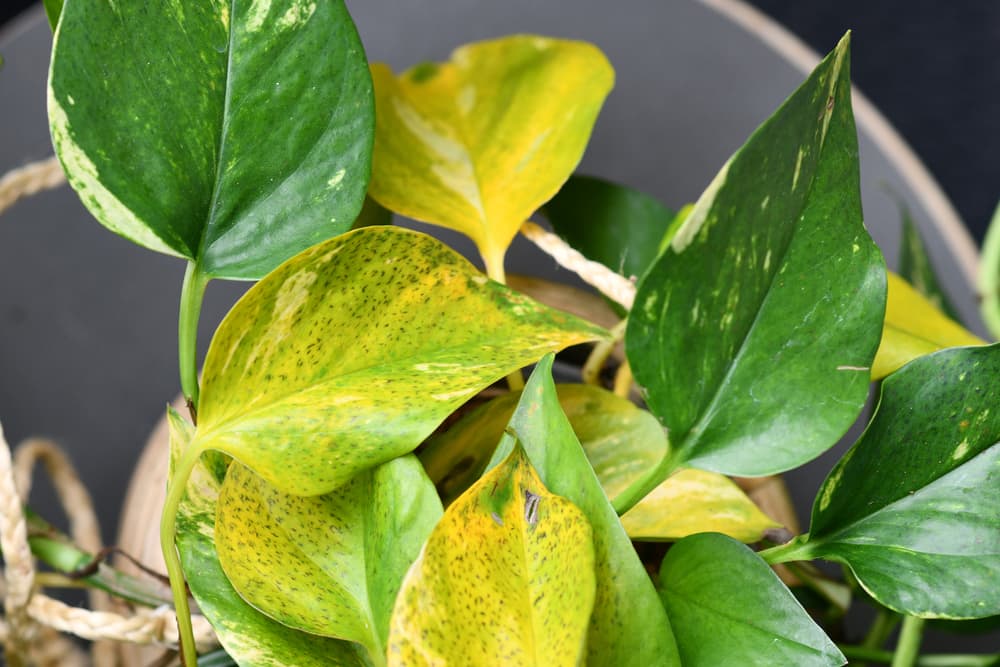
On checking the roots, if they appear brown and soft then action must be taken.
Using a pair of secateurs cut and remove the brown soft roots, leaving only the healthy-looking roots.
The plant can then be repotted with some fresh free-draining compost and kept an eye on.
References
- 1Epipremnum aureum. (n.d.). North Carolina Extension Gardener. Retrieved May 22, 2023, from https://plants.ces.ncsu.edu/plants/epipremnum-aureum/
